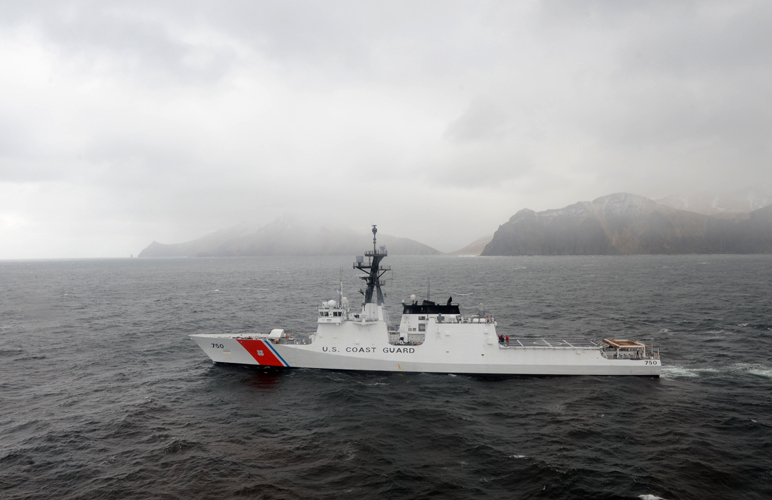Climate change will cost Alaska billions, new national report says
Alaska's Arctic location means it will be hit especially hard by climate change impacts.

Thanks to its Arctic location, Alaska faces high costs and extreme impacts from climate change, says a new national report that describes effects nationally.
The report, part of a quadrennial climate assessment, says the warming climate poses numerous risks to the economy, human health and natural ecosystems from the Arctic to the tropics. But Alaska, which is warming faster than any other state, is a special case, the report says.
“As part of the Arctic, Alaska is on the front lines of climate change and is among the fastest warming regions on Earth, says the report, the second volume in what is titled the Fourth National Climate Assessment.
The assessment’s first volume was released last year; focused on science, including connections between Arctic warming and mid-latitude weather. Congress has mandated national climate assessments every four years, and together, the two volumes that make up the fourth assessment meet that legal requirement, said officials from the National Oceanic and Atmospheric Administration, the agency that shepherded the project.
The work of about 300 scientists, the report released Friday has a chapter devoted to Alaska.
The “myriad” problems facing Alaska, according to that chapter, include flooding and coastal erosion that is affecting 87 percent of Alaska Native communities; loss of glacier ice at an annual rate from 1994 to 2012 that was nearly twice the rate recorded in the 1962-2006 period, with expected effects not only on global sea level but also changing streamflow along Gulf of Alaska and changing food webs within the gulf; permafrost thaw and risks to infrastructure atop it; impacts to indigenous communities dependent on wild foods and travel over now-vulnerable ice; increased risk of illness and injury related to extreme weather events; and assorted changes in the marine environment.
Much of the Alaska section focused on climate impacts to marine resources, including ocean acidification. Alaska’s seafood harvests were worth nearly $6 billion in the 2013-14 season, so climate impacts on the oceans “are of considerable economic interest,” the report said.
Acidification is generally considered an impact of carbon emissions that is separate from climate change. Carbon gases in the atmosphere create a greenhouse effect that warms the planet overall, while the carbon gases that are absorbed by the oceans change water chemistry by lowering overall pH levels.
Still, Arctic and near-Arctic warming exacerbate acidification, the report said. Scarcity of sea ice allows wider stretches of ocean to absorb carbon gases from the air, and faster melt of glaciers and increased flow of rivers pours more freshwater into marine systems, as well as more organic matter, diluting calcium, increasing carbon and lowering pH levels, the report said.
Overall, climate change will impose “substantial net damage to the U.S. economy.” David Easterling, technical support director for NOAA’s National Centers for Environmental Information, said in a Friday teleconference.
In Alaska, costs caused by the warming climate are expected by 2030 to total $3.3 billion to $6.7 billion in 2015 dollars, the report says.
Nationally, climate change will impose severe costs on the economy, and there is no doubt that humans have caused it, the report says.
“Observations of global average temperature provide clear and compelling evidence that global average temperature is higher and is rising more rapidly than anything modern civilization has experienced, and this warming temperature can only be explained by human activities, especially emissions of greenhouse gases into the atmosphere,” Easterling said at the teleconference.
Despite President Trump’s repeated claims that global warming is a hoax, and despite the Trump administration’s pattern of downplaying climate change and ending climate-change action, there was no political pressure put on the approximately 300 report authors, Easterling said.
“I want to make one thing very clear: This report is purely the product of those authors and there was not external interference in its development,” he said.
Along with the climate assessment, officials on Friday released a report detailing what is currently known about North America’s carbon cycle.
Fossil-fuel burning remains the main producer of atmospheric carbon, but North America’s contribution to global carbon emissions from fossil-fuel use has declined to 17 percent in 2013 from 24 percent in 2004, said the Second State of the Carbon Cycle Report.
Concentrations of atmospheric carbon dioxide and methane have continued to rise — at a rate of 2 parts per million for CO2 and 3.8 parts per billion for methane, William Hohenstein, director of energy and environmental policy for the U.S. Department of Agriculture, said at the teleconference.
That is the case even though North America, overall, has made progress at reducing carbon emissions. Fossil fuel use is the main source of emissions, but those emissions have decreased at a rate of about 1 percent annually over the past decade, Hohenstein said.
Overall, lands and waterways have served as a net carbon sink, and that includes the Arctic and boreal regions of Alaska and Canada. From 2004 to 2013, those regions absorbed a little under 0.8 percent of the carbon emitted by burned fossil fuels, according to the climate-cycling report.
But there are warning signs about the potential for the regions to switch to net carbon emitters.
Of the total 626,705 teragrams of carbon held in North America’s soils, nearly three quarters of that is held in permafrost, according to the report, which detailed the continent’s carbon budget.
Findings about methane are mixed.
North American methane emissions have been “relatively stable” overall, Hohenstein said at the teleconference.
But boreal wetlands in Alaska and Canada are big emitters compared to other sources. Methane emissions from boreal wetlands exceed emissions for any other North American source, including fossil fuel use, the report says.
Yereth Rosen is a 2018 Alicia Patterson Foundation fellow.